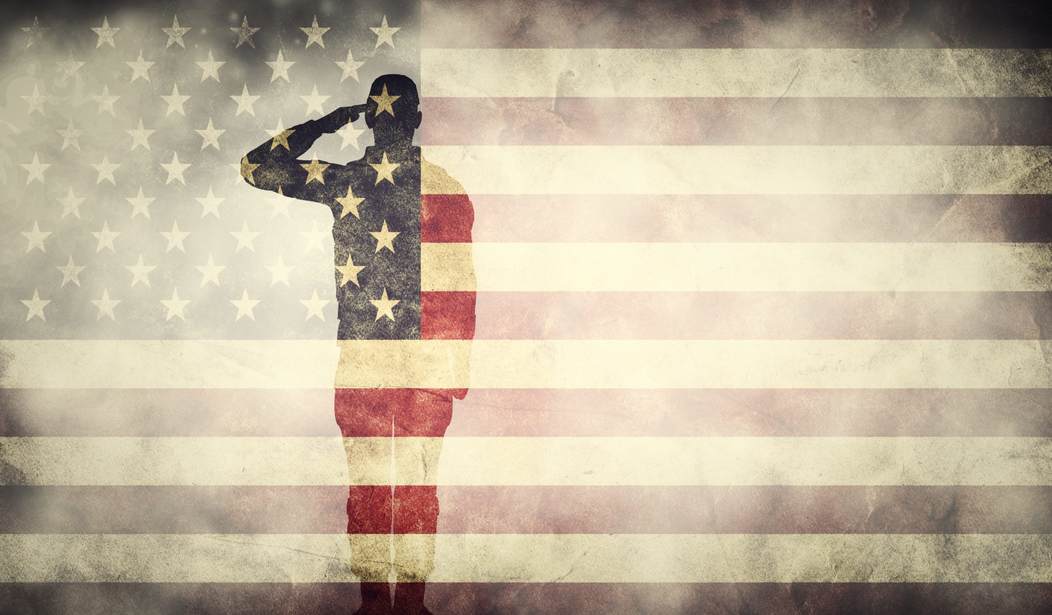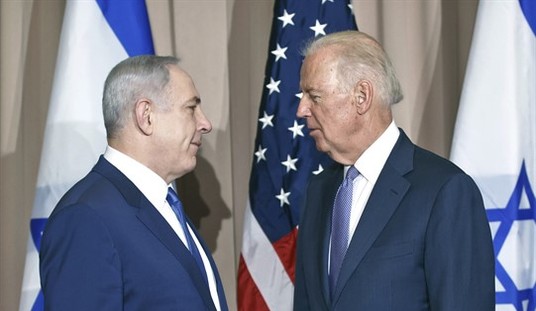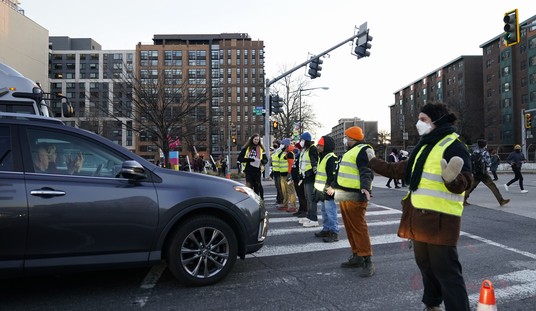Memorial Day is a time to remember all those who died while serving in the United States military. In our 240-year history, the United States has fought twelve major wars, and over one million Americans have died in wartime. This list will dwell on those wars, and explain why the troops in each fought and died.
Here are the twelve major wars that claimed American troops, in order from the least to most battlefield and non-battlefield deaths. Each war had unique causes and motivations, and it is important for us to understand why our soldiers gave the last measure of devotion.
Statistics are from the Department of Veterans Affairs and the Congressional Research Service.
12. The Persian Gulf War (1990-1991) — 383 deaths.
When Iraq’s Saddam Hussein invaded Kuwait in August 1990, Americans denounced his move as overreach and stepped in to support the smaller nation. Support for Israel might have been a motivation among American troops as well, because Hussein was well-known for supporting the Palestinians in the Arab-Israeli conflict. This was the shortest of America’s major wars, and the most decisive. It has been called the “pinnacle of American military supremacy,” and with good reason.
11. The Indian Wars (ca. 1817-1898) — 1,000 deaths.
United States citizens fought Native Americans for over a century, and there was abuse and foul play on both sides. Settlers often pushed natives back, and many of the worst abuses could be traced back to Andrew Jackson, who started the Seminole Wars and carried out the “Trail of Tears.” Many American troops involved fought for their lands and families, while some fought for adventure and the spoils of war. The idea of “Manifest Destiny” also motivated many, who believed that American settlers should occupy all the land between the Atlantic and Pacific Oceans.
The 1,000 American deaths is an estimate from the Department of Veterans Affairs. The actual number is not known, and while the major wars took place between 1817 and 1898, sporadic conflict between Americans and natives continued until 1924.
Next Page: The War of 1812 and the Spanish-American War.
10. The War of 1812 (1812-1815) — 2,260 deaths.
The Napoleonic Wars in Europe had many consequences for the United States. Napoleon’s rule enabled America to make the Louisiana Purchase in 1803, but Britain’s efforts against Napoleon led the United States to declare war on its former mother country. Britain restricted trade between Napoleonic France and the U.S., and it seized as many as 10,000 American merchant sailors, forcing them to serve in the British navy.
The War of 1812 was famously haphazard. The British originally adopted a defensive strategy, and aimed to create a Native American buffer state between the U.S. and Canada. While American troops defeated the natives, they failed to win victories in Canada. British troops eventually went on the offensive, burning Washington, D.C., but eventually the Americans prevailed. The largest battle of the war, Andrew Jackson’s great victory at New Orleans, actually occurred only after the treaty was signed!
In this war, Americans fought “a second war of independence,” and pushed for better economic conditions, such as more free trade and more lands to settle.
9. The Spanish-American War (1898-1901) — 2,446 deaths.
After the mysterious sinking of the U.S. battleship Maine, in Havana, Cuba, the United States demanded that Spain give Cuba its independence. Spain declared war, and U.S. forces joined with Cubans and Filipinos in defeating the European empire in Cuba and in the Pacific. Theodore Roosevelt, later to become president, gained fame in the battle of San Juan Hill.
Americans fought the Spanish-American War to bring independence to Cuba and the Philippines, and to rescue these nations from the depredations of Spanish rule.
Next Page: The Revolutionary War, and the War on Terror.
8. The Revolutionary War (1775-1783) — 4,435 deaths.
As any Tea Party activist can tell you, the United States declared independence from Britain largely due to higher taxes. After centuries of “salutary neglect,” where the British government gave local American governments large autonomy and did not enforce the taxes on the books, they fought a big war in America (The French and Indian War) and in Europe (The Seven Years’ War) that drove Britain deeply into debt. When they tried to collect taxes, Americans balked.
Americans claimed the historic rights of Englishmen, and the renowned British orator Edmund Burke agreed with them. Although General George Washington lost key battles in the beginning, a victory at Saratoga turned the tide. With the help of the French fleet, and other conflicts abroad, the United States won independence from Britain after the key victory at Yorktown in 1781.
Americans fought and died for what they saw as their rights — first as Englishmen, and then later as an independent country.
7. The Global War on Terror (2001-?) — 6,888 deaths.
Since the terror attacks of September 11, 2001, the United States has been “at war” with the forces of radical Islamic terrorism across the globe. Fighting such a nebulous foe has proven rather difficult, as the war has spread to multiple theaters, and as President Obama has proven rather unclear as to his own goals regarding it. On October 7, 2001, the war began with bombings in Afghanistan — reprisal for the country sheltering Osama Bin Laden.
Time reported the current death toll at 6,888, with a mere seven deaths in 2016 (three in combat, four from non-combat causes). Americans fight for many reasons — to defend their homes and families, to serve their country, and to support the cause of freedom across the world. Whatever you think of the seemingly endless war on terror, we should all honor their sacrifices on this day and every day, and do what we can to thank the veterans who return home.
Next Page: The Mexican-American War.
6. The Mexican-American War (1846-1848) — 13,283 deaths.
In 1836, Texas declared independence from Mexico. After the battle of the Alamo Mission energized Texas forces to finally defeat Mexico, America’s southern neighbor grudgingly accepted the state’s independence. When the United States annexed Texas in 1845, Mexico responded with a declaration of war.
Mexico was ill-prepared for war, and the U.S. invaded from the north, blockaded the Pacific coast, and captured the capital of Mexico City. This victory gave the United States a huge swath of land — not just Texas, but the lands which would become California, Colorado, Utah, New Mexico, Arizona, and Nevada. The war was very popular among Democrats at the time, but deeply unpopular among Whigs, who later assimilated into the Republican Party.
Americans fought to defend Texas, and many fought to expand America’s boundaries and influence. At the time, opponents in the north decried the pursuit of western lands, saying that southerners intended to extend slavery into the west and even further south. As the Civil War loomed, some Democrats openly argued for annexing foreign lands such as Cuba in order to expand slavery. Nevertheless, most Americans who fought in this war likely aimed to protect Texas and their own homes and families (as did most Confederate soldiers in the Civil War afterward).
Next Page: The Korean War.
5. The Korean War (1950-1953) — 36,574 deaths.
As World War II came to an end, the Soviet Union declared war on Japan, invading Korea north of the 38th parallel. The United States occupied the southern half of Korea, and two different governments developed — each believing only it spoke for Korea as a whole. In June 1950, North Korea invaded South Korea. UN forces (88 percent of which were American) launched a counter-attack, defeating the North Koreans handily and pushing them back into China.
The Chinese then entered the war, leading the North Koreans to retake the ground they had lost. The final two years became a war of attrition, and the two sides effectively split Korea at the 38th parallel. Although an armistice was signed on July 27, 1953, and a demilitarized zone created between the two countries, North and South Korea have never signed a peace treaty, so they are technically still at war.
Americans fought the Korean War to protect South Korea from an invading power. They also fought to contain the spread of Communism — a key aim of U.S. foreign policy after 1946, when U.S. diplomat George Kennan laid out the strategy of containment against the statist influences of the Soviet Union around the globe.
Next Page: The war America lost.
4. The Vietnam War (1964-1973) — 58,220 deaths.
Perhaps no war in American history has a worse reputation. Vietnam is “the war America lost.” In the long run, what America lost was the will to fight. The war we know as the Vietnam War is really the second of two wars. The First Indochina War (1946-1954) ended with the North Vietnamese communists in control above the 17th parallel with a French-connected government in the south.
U.S. troops were in Vietnam long before 1964, but the VA counts that year as the beginning of the war due to the Gulf of Tonkin incident, when a sea battle led to the Gulf of Tonkin Resolution, which gave the U.S. president authorization to increase military presence. American involvement peaked in 1968, and bordering areas of Laos and Cambodia were also heavily bombed by U.S. planes.
The same year saw the Tet Offensive, a large-scale attack by the Viet Cong and the North Vietnamese army which failed to overthrow the South Vietnamese government, but persuaded the American public that our armies were not making progress in winning the war.
Direct U.S. military involvement ended on August 15, 1973, after Congress decided to no longer fund the effort against North Vietnam. The communists took the capital of South Vietnam, Saigon, in April 1975, ending the war in their favor. “Vietnam” is still a term for a long-term war going nowhere, and some have argued that the War on Terror has become our modern Vietnam.
Despite this loss, we should still honor the sacrifices of our brave soldiers who gave their lives for American freedom, fighting to hold back the influence of the totalitarian ideology of Communism. Eventually, the Cold War ended with American victory, so their sacrifices were not in vain.
Next Page: The “war to end all wars.”
3. World War I (1917-1918) — 116,516 deaths.
Woodrow Wilson campaigned for re-election in 1916 as a peacetime president, but when Germany decided to resume all-out submarine warfare against every ship headed to Britain, and offered a military alliance with Mexico in the Zimmerman Telegram, Wilson led Congress to declare a “war to end all wars” that would “make the world safe for democracy.”
The war saw a dramatic expansion of the United States government, which promoted propaganda to thoroughly demonize the Germans (despite America’s large German minority, who fought for neutrality). Many Americans fought to defeat the barbaric “Krauts,” but the majority of them fought to defend their homes and families, especially after the Zimmerman Telegram made it seem like Germany was trying to launch an attack on the U.S. through Mexico.
Next Page: World War II.
2. World War II (1941-1945) — 405,399 deaths.
The United States famously entered the Second World War following the attack on Pearl Harbor on December 7, 1941. American action led the allies to decisive victories over both Japan and Germany. As both foes were authoritarian powers, many see the victories in World War II as one of America’s finest hours, and they did solidify the United States and the Soviet Union as the world’s two superpowers.
Americans fought for freedom, and as always for their homes and families. The threats from both Japan and Germany seemed truly existential. Even though the truth about the Holocaust was only fully revealed very late into the war, knowing that the United States was instrumental to defeating such evil fills Americans with a well-deserved pride.
Next Page: The Civil War — was it really about slavery?
1. The American Civil War (1861-1865) — 650,000 to 850,000 deaths.
The Civil War was the bloodiest war in America’s history, when you consider both the Confederate dead and the Union dead as Americans. The Congressional Research Service report did not do this, and reported Union dead at 364,511 — which makes World War II the bloodiest for the United States military. A 2012 historical estimate put the numbers higher than previously thought, between 650,000 and 850,000 for both sides. The VA puts the number at 498,332 for both sides.
Many contest the simple statement that the Civil War was about the issue of slavery, but you have to twist history to ignore that slavery was the central issue. The south had been pushing the expansion of slavery into the territories, and northerners countered that the Northwest Ordinance (a law older than the Constitution) set the precedent that slavery should not be allowed to expand to new territories.
The Missouri Compromise of 1820 set a line at the latitude 36°30′ north: no state admitted to the Union above that line would have slavery, while any state below it could do so. This compromise was seen to have the full force of the Constitution, and it held the Union together. In 1854, the Kansas-Nebraska Act opened both territories to the principle of “popular sovereignty”: settlers would vote when Kansas and Nebraska entered the union on whether or not each state would accept slavery. Republicans like Abraham Lincoln condemned this principle, as the black slaves could not vote.
In 1857 came the most notorious Supreme Court case in American history, Dred Scott v. Sandford, which held that “a negro, whose ancestors were imported into [the U.S.], and sold a slaves,” could not be an American citizen and had no standing to sue in federal court. This meant that even if a slave was taken into free lands (as Dred Scott had been), their legal status would not change.
Abraham Lincoln won the election of 1860 on a platform opposed to the expansion of slavery. He won in a four-way race, but his victory showed that the south’s political dominance had come to an end. The movement to expand slavery and the fear that the north would hold political sway in the Union sparked the Civil War — it was always about slavery.
For Lincoln and the Union, however, the war was primarily about preserving the United States. Lincoln stated, multiple times, that if he could preserve the Union without freeing a single slave, he would do so. Indeed, the Emancipation Proclamation freed a grand total of zero slaves — because it only granted freedom to slaves still under the control of the Confederacy!
For the soldiers who fought and died on both sides, the war was not primarily about slavery, but about their families, their homes, and their patriotic duty. Union soldiers fought to preserve the Union, Confederate soldiers fought to defend their homes. Later in the war, more Union troops became motivated by the abolition of slavery, and a few Confederate soldiers were motivated by fear of a racially equal society — but most fought for the same reasons Americans have always fought: to defend their home and to honor their country.
This is why we remember those soldiers today, because they really did give their last measure of devotion. They fought for us — for our freedoms, and for America’s place on Earth. Let us honor their sacrifice by standing up for our freedoms, our Constitution, and the brave men and women who serve in our armed forces today.




















Join the conversation as a VIP Member